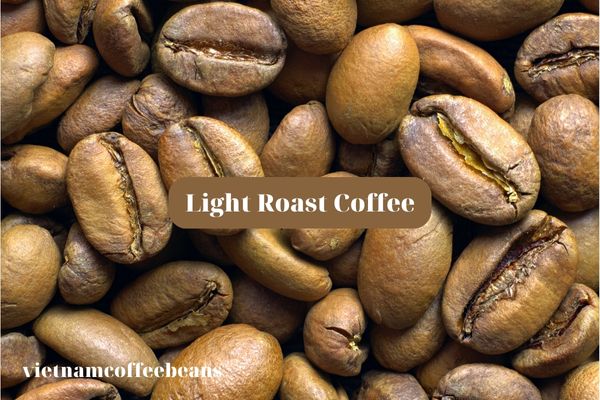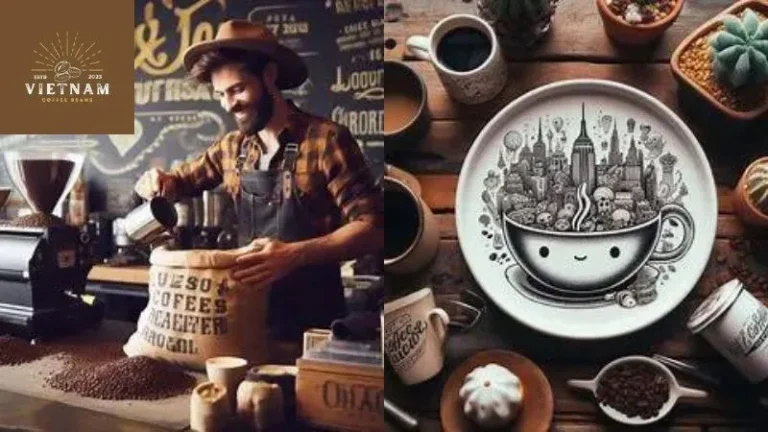Many people wonder which coffee roast has the most caffeine, especially when they need a boost of energy in the morning or during the day.
Imagine the warm, inviting aroma of freshly coffee wafting through your kitchen. Now picture taking that first sip, feeling the energy surge through your body as the caffeine kicks in. Coffee has become a staple in our daily lives, fueling us with its rich flavor and stimulating effects.
However, there are many benefits to traditional coffee roasting methods, including a more complex flavor profile and a smoother, less acidic taste.
But have you ever wondered which coffee roast packs the most punch when it comes to caffeine?
In this article, we will explore the different types of coffee roasts and delve into their caffeine content. From light to dark roast, espresso to decaffeinated, we will uncover which provide that much-needed jolt to jumpstart your day.
So grab a cup of your favorite drink and join me on this caffeinated journey as we discover which coffee roast reigns supreme in delivering that invigorating boost we all crave.
Key Takeaways
- Light roast has the least amount of caffeine compared to other roasts.
- Dark roast has lower caffeine content compared to medium roast, but it has bolder flavors.
- Espresso roast has the highest caffeine content among all the coffee roasts.
- Decaffeinated coffee contains a small amount of caffeine, but it is significantly less than regular.
Which Coffee Roast Has The Most Caffeine: Light Roast Coffee

If you’re looking for a jolt of energy in the morning, light roast might not be your best bet. While it may not pack as much caffeine as darker roasts, light roast has its own unique benefits. One advantage is that the lighter roasting process retains more of the bean’s natural flavors and aromas, resulting in a brighter and fruitier taste profile.
Light roast coffee is roasted at a lower temperature and for a shorter time to give it its light brown color and mild, delicate flavor. Benefits of air roasting for coffee beans include enhancing the natural flavors and unique characteristics of the coffee beans, leading to a cleaner and more consistent taste without burnt flavors from conventional roasting.
Lighter roasts have more caffeine per bean than darker roasts, because the roasting process breaks down some of the caffeine molecules.
Additionally, light roast contains higher levels of antioxidants compared to its darker counterparts. When making light roast, it’s important to use slightly cooler water temperatures and shorter brew times to avoid over-extraction and bitterness.
This allows you to fully enjoy the delicate flavors that are characteristic of this roast level. So if you appreciate nuanced flavor profiles and want to savor the natural subtleties of coffee, give light roast a try!
Medium Roast

With its rich, golden hue and a taste that dances on the palate, medium roast enlivens your senses like a gentle sunrise, awakening the mind without overpowering it.
Medium roast is known for striking a perfect balance between the bright acidity of light roasts and the deep flavors of dark roast coffee. It offers a more complex flavor profile that is often described as well-rounded and smooth.
This roast brings out notes of caramel, chocolate, and nuts while still retaining some of the original characteristics of the beans.
When making medium roast, it is important to use the right techniques to fully extract its flavors. A medium grind size works best for most methods such as drip brewing or pour-over. However, if you prefer a stronger cup, using a slightly finer grind can enhance the richness of the brew. Additionally, controlling water temperature and brew time can help achieve optimal results.
Medium roast offers an enjoyable drinking experience with its balanced flavor profile and versatility in brewing methods. Whether you prefer it black or with milk and sugar, this roast will surely satisfy your caffeine cravings while providing a delightful sensory experience.
Dark Roast

Dark roast coffee is known for its bold flavors and lower caffeine content. It is the perfect choice for those who prefer a stronger, more robust taste in their cup of joe. With a longer roasting time, dark roast beans develop rich, smoky flavors that can be enjoyed by connoisseurs looking for a more intense experience.
Bold flavors and lower caffeine content
Bold flavors are accompanied by a lower caffeine content, creating a delightful yet mellow coffee experience. When it comes to bold flavors, dark roast takes the lead. Its rich and robust taste is often associated with notes of chocolate, caramel, and even smokiness.
However, despite its strong flavor profile, dark roast actually contains less caffeine than lighter roasts. This can be attributed to the longer roasting process that dark beans undergo, which leads to a partial breakdown of caffeine molecules.
So if you’re someone with caffeine sensitivity or simply enjoy bold flavors without the jitters, opting for a dark roast might be your best bet.
- Dark roast offers a deep and intense flavor.
- It pairs well with milk or cream for added richness.
- The low acidity in dark roast makes it easier on the stomach.
- The smoky undertones add complexity to the overall taste.
- It’s perfect for those who prefer a more mellow coffee experience.
Suitable for those who prefer a stronger taste
For those who crave a bolder coffee experience, the dark roast is like a symphony of flavors dancing on your taste buds. It is the perfect choice for those who prefer a stronger taste in their cup of joe. Dark roasted beans undergo a longer roasting process, resulting in a rich and bold flavor profile that can be described as smoky, chocolaty, and even slightly bitter.
Not only does the dark roast offer a robust taste, but it also contains the highest caffeine content among all coffee roasts. The prolonged roasting process breaks down the caffeine molecules in the beans, resulting in higher concentrations per serving.
So if you’re looking for that extra kick to start your day or keep you energized throughout, reach for a cup of dark roast – it packs quite a punch!
Espresso Roast Coffee
If you’re looking for a smooth and rich coffee experience, espresso roast is the way to go! Espresso roast offers a unique set of benefits that make it stand out from other roasts. The beans used for espresso roast are dark roasted, which gives them a bold and intense flavor profile.
This roast also has a higher caffeine content compared to lighter roasts, making it perfect for those who need an extra boost in the morning or throughout the day.
Espresso roast is known for its robust taste and thicker consistency. It has a deep, caramelized flavor with notes of chocolate and sometimes even smokiness. The longer roasting time allows the natural oils within the beans to develop, resulting in a full-bodied cup of coffee.
In comparison to other roasts like light or medium, espresso roast has less acidity and bitterness. This makes it more palatable for people who prefer a smoother taste profile without sacrificing the strength of their brew.
Overall, if you want a coffee that packs a punch in terms of both flavor and caffeine content, espresso roast is your best bet. Give it a try to elevate your daily coffee routine!
Decaffeinated Coffee
Indulge in the smooth, caffeine-free embrace of decaffeinated coffee and let its gentle waves of flavor wash over your senses. Decaffeinated coffee offers a great alternative for those who enjoy the taste of coffee but want to limit their caffeine intake.
Contrary to popular belief, decaf does contain a small amount of caffeine, but significantly less than regular coffee. In fact, it typically contains around 2-5 milligrams per 8-ounce cup compared to the average 95 milligrams found in regular drip coffee.
The health benefits of decaffeinated coffee are numerous. It has been linked to reducing the risk of certain diseases such as type 2 diabetes, Parkinson’s disease, and liver disease. The process of removing caffeine from coffee beans involves steaming them and then rinsing them with a solvent or water.
This method helps retain most of the flavor compounds while reducing caffeine amount, resulting in a delicious cup without the jitters.
However, ensuring that your coffee beans are fresh, regardless of the roast type, is crucial to the quality of your coffee. Here are some tips for keeping roasted coffee fresh: store coffee in an airtight container, avoid light, heat, and moisture, and only grind the amount of coffee you will use in one sitting.
Frequently Asked Questions
Conclusion
In conclusion, the caffeine amount in coffee depends on various factors, such as the type of beans, the method, and the roasting level. Generally, robusta beans have more caffeine than arabica beans, and cold brew has more caffeine than hot brew.
However, the roasting level does not affect the caffeine content significantly, as the beans are roasted at high temperatures that do not alter the caffeine molecules.
Therefore, light and dark roast have similar amounts of caffeine, and the choice of roaster is more a matter of personal preference and taste.
After examining the various coffee roasts and their caffeine amount, it is clear that espresso roast coffee has the most caffeine. With its bold flavor and intense aroma, this dark and robust blend packs a powerful punch of caffeine.
Similar to a roaring engine, it delivers a jolt of energy that can jumpstart your day. Whether you prefer light, medium, or dark roast, knowing the caffeine levels in each type allows you to choose the perfect brew to suit your needs and keep you going strong.
If you are interested in learning how to roast coffee beans at home, you can find many online tutorials and guides from our website.
Hope you get useful information from the article, If you want to learn or want to read more articles about coffeebeans, please visit the website: vietnamcoffeebeans.com
Thank you!




